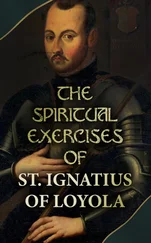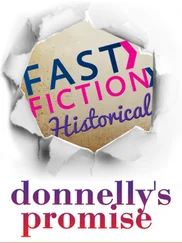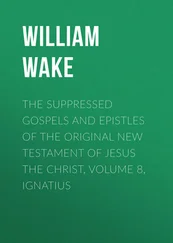Ignatius Donnelly - Antediluvian world
Здесь есть возможность читать онлайн «Ignatius Donnelly - Antediluvian world» весь текст электронной книги совершенно бесплатно (целиком полную версию без сокращений). В некоторых случаях можно слушать аудио, скачать через торрент в формате fb2 и присутствует краткое содержание. Жанр: Старинная литература, на русском языке. Описание произведения, (предисловие) а так же отзывы посетителей доступны на портале библиотеки ЛибКат.
- Название:Antediluvian world
- Автор:
- Жанр:
- Год:неизвестен
- ISBN:нет данных
- Рейтинг книги:5 / 5. Голосов: 1
-
Избранное:Добавить в избранное
- Отзывы:
-
Ваша оценка:
- 100
- 1
- 2
- 3
- 4
- 5
Antediluvian world: краткое содержание, описание и аннотация
Предлагаем к чтению аннотацию, описание, краткое содержание или предисловие (зависит от того, что написал сам автор книги «Antediluvian world»). Если вы не нашли необходимую информацию о книге — напишите в комментариях, мы постараемся отыскать её.
Antediluvian world — читать онлайн бесплатно полную книгу (весь текст) целиком
Ниже представлен текст книги, разбитый по страницам. Система сохранения места последней прочитанной страницы, позволяет с удобством читать онлайн бесплатно книгу «Antediluvian world», без необходимости каждый раз заново искать на чём Вы остановились. Поставьте закладку, и сможете в любой момент перейти на страницу, на которой закончили чтение.
Интервал:
Закладка:
We find the precise Maya o a circle in a circle, or a dot within a circle, repeated in the Phoenician forms for o, thus, ### and ### , and by exactly the same forms in the Egyptian hieroglyphics; in the Runic we have the circle in the circle; in one form of the Greek o the dot was placed along-side of the circle instead of below it, as in the Maya.
Are these another set of coincidences?
Take another letter:
The letter n of the Maya alphabet is represented by this sign, itself probably a simplification of some more ornate form, ### . This is something like our letter S, but quite unlike our N. But let us examine into the pedigree of our n. We find in the archaic Ethiopian, a language as old as the Egyptian, and which represents the Cushite branch of the Atlantean stock, the sign for n (na) is ### ; in archaic Phoenician it comes still closer to the S shape, thus, ### , or in this form, ### ; we have but to curve these angles to approximate it very closely to the Maya n; in Troy this form was found, ### . The Samaritan makes it ### ; the old Hebrew ### ; the Moab stone inscription gives it ### ; the later Phoenicians simplified the archaic form still further, until it became ### ; then it passed into ### : the archaic Greek form is ### ; the later Greeks made ### , from which it passed into the present form, N.
All these forms seem to be representations of a serpent; we turn to the valley of the Nile, and we find that the Egyptian hieroglyphic for n was the serpent, ### ; the Pelasgian n was ### ; the Arcadian, ### ; the Etruscan, ### .
Can anything be more significant than to find the serpent the sign for n in Central America, and in all these Old World languages?
Now turn to the letter k. The Maya sign for k is ### . This does not look much like our letter K; but let us examine it. Following the precedent established for us by the Mayas in the case of the letter m, let us see what is the distinguishing feature here; it is clearly the figure of a serpent standing erect, with its tail doubled around its middle, forming a circle. It has already been remarked by Savolini that this erect serpent is very much like the Egyptian Uraeus, an erect serpent with an enlarged body—a sacred emblem found in the hair of their deities. We turn again to the valley of the Nile, and we find that the Egyptian hieroglyphic for k was a serpent with a convolution or protuberance in the middle, precisely as in the Maya, thus, ### ; this was transformed into the Egyptian letter ### ; the serpent and the protuberance reappear in one of the Phoenician forms of k, to wit, ### ; while in the Punic we have these forms, ### and ### . Now suppose a busy people trying to give this sign: instead of drawing the serpent in all its details they would abbreviate it into something like this, ### ; now we turn to the ancient Ethiopian sign for k (ka), and we have ### , or the Himyaritic Arabian ### ; while in the Phoenician it becomes ### ; in the archaic Greek, ### ; and in the later Greek, when they changed the writing from left to right, ### . So that the two lines projecting from the upright stroke of our English K are a reminiscence of the convolution of the serpent in the Maya original and the Egyptian copy.
Turn now to the Maya sign for t: it is ### , . What is the distinctive mark about this figure? It is the cross composed of two curved lines, thus, ### . It is probable that in the Maya sign the cross is united at the bottom, like a figure 8. Here again we turn to the valley of the Nile, and we find that the Egyptian hieroglyph for t is ### and ### ; and in the Syriac t it is ### . We even find the curved lines of the Maya t which give it something of the appearance of the numeral 8, repeated accurately in the Mediterranean alphabets; thus the Punic t repeats the Maya form almost exactly as ### and ### . Now suppose a busy people compelled to make this mark every day for a thousand years, and generally in a hurry, and the cross would soon be made without curving the lines; it would become X. But before it reached even that simplified form it had crossed the Atlantic, and appeared in the archaic Ethiopian sign for tsa, thus, ### . In the archaic Phoenician the sign for ### is ### and ### ; the oldest Greek form is ### or ### and the later Greeks gave it to the Romans ### , and modified this into ### ; the old Hebrew gave it as ### and ### ; the Moab stone as ### ; this became in time ###
and ### .
Take the letter a. In the Maya there are three forms given for this letter. The first is ### ; the third is ### . The first looks very much like the foot of a lion or tiger; the third is plainly a foot or boot.
If one were required to give hurriedly a rude outline of either of these, would he not represent it thus, ### ; and can we not conceive that this could have been in time modified into the Phoenician a, which was ### ? The hieratic Egyptian a was ### ; the ancient Hebrew, which was ### or ### ; the ancient Greek was the foot reversed, ### ; the later Greek became our A.
Turn next to the Maya sign for q (ku): it is ### . Now what is the peculiarity of this hieroglyph? The circle below is not significant, for there are many circular figures in the Maya alphabet. Clearly, if one was called upon to simplify this, he would retain the two small circles joined side by side at the top, and would indicate the lower circle with a line or dash. And when we turn to the Egyptian q we find it in this shape, ### ; we turn to the Ethiopian q (khua), and we find it ### , as qua, ### ; while the Phoenician comes still nearer the supposed Maya form in ### ; the Moab stone was ### ; the Himyaritic Arabian form became ### ; the Greek form was ### , which graduated into the Roman Q.
But a still more striking proof of the descent of the Phoenician alphabet from the Maya is found in the other form of the q, the Maya cu, which is ### . Now, if we apply the Maya rule to this, and discard the outside circle, we have this left, ### . In time the curved line would be made straight, and the figure would assume this form, ### ; the next step would be to make the cross on the straight line, thus, ### . One of the ancient Phoenician forms is ### . Can all this be accident?
The letter c or g (for the two probably gave the same sound as in the Phoenician) is given in the Maya alphabet as follows, ### . This would in time be simplified into a figure representing the two sides of a triangle with the apex upward, thus, ### . This is precisely the form found by Dr. Schliemann in the ruins of Troy, ### . What is the Phoenician form for g as found on the Moab stone? It is ### . The Carthaginian Phoenicians gave it more of a rounded form, thus, ### . The hieratic Egyptian figure for g was ### ; in the earlier Greek form the left limb of the figure was shortened, thus, ### ; the later Greeks reversed it, and wrote it ### ; the Romans, changed this into ### and it finally became C.
In the Maya we have one sign for p, and another for pp. The first contains a curious figure, precisely like our r laid on its back ### .
There is, apparently, no r in the Maya alphabet; and the Roman r grew out of the later Phoenician r formed thus, ### ; it would appear that the earliest Phoenician alphabet did not contain the letter r. But if we now turn to the Phoenician alphabet, we will find one of the curious forms of the p given thus, ### , a very fair representation of an r lying upon its face. Is it not another remarkable coincidence that the p, in both Maya and Phoenician, should contain this singular sign?
The form of pp in the Maya alphabet is this, ### . If we are asked, on the principle already indicated, to reduce this to its elements, we would use a figure like this, ### ; in time the tendency would be to shorten one of these perpendicular lines, thus, and this we find is very much like the Phoenician p, ### . The Greek ph is ### .
The letter l in the Maya is in two forms; one of these is ### , the other is ### . Now, if we again apply the rule which we observed to hold good with the letter m—that is, draw from the inside of the hieroglyph some symbol that will briefly indicate the whole letter—we will have one of two forms, either a right-angled figure formed thus, ### , or an acute angle formed by joining the two lines which are unconnected, thus, ### ; and either of these forms brings us quite close to the letter l of the Old World. We find l on the Moab stone thus formed, ### . The archaic Phoenician form of l was ### , or ### ; the archaic Hebrew was ### and ### ; the hieratic Egyptian was ### ; the Greek form was ###
Читать дальшеИнтервал:
Закладка:
Похожие книги на «Antediluvian world»
Представляем Вашему вниманию похожие книги на «Antediluvian world» списком для выбора. Мы отобрали схожую по названию и смыслу литературу в надежде предоставить читателям больше вариантов отыскать новые, интересные, ещё непрочитанные произведения.
Обсуждение, отзывы о книге «Antediluvian world» и просто собственные мнения читателей. Оставьте ваши комментарии, напишите, что Вы думаете о произведении, его смысле или главных героях. Укажите что конкретно понравилось, а что нет, и почему Вы так считаете.












